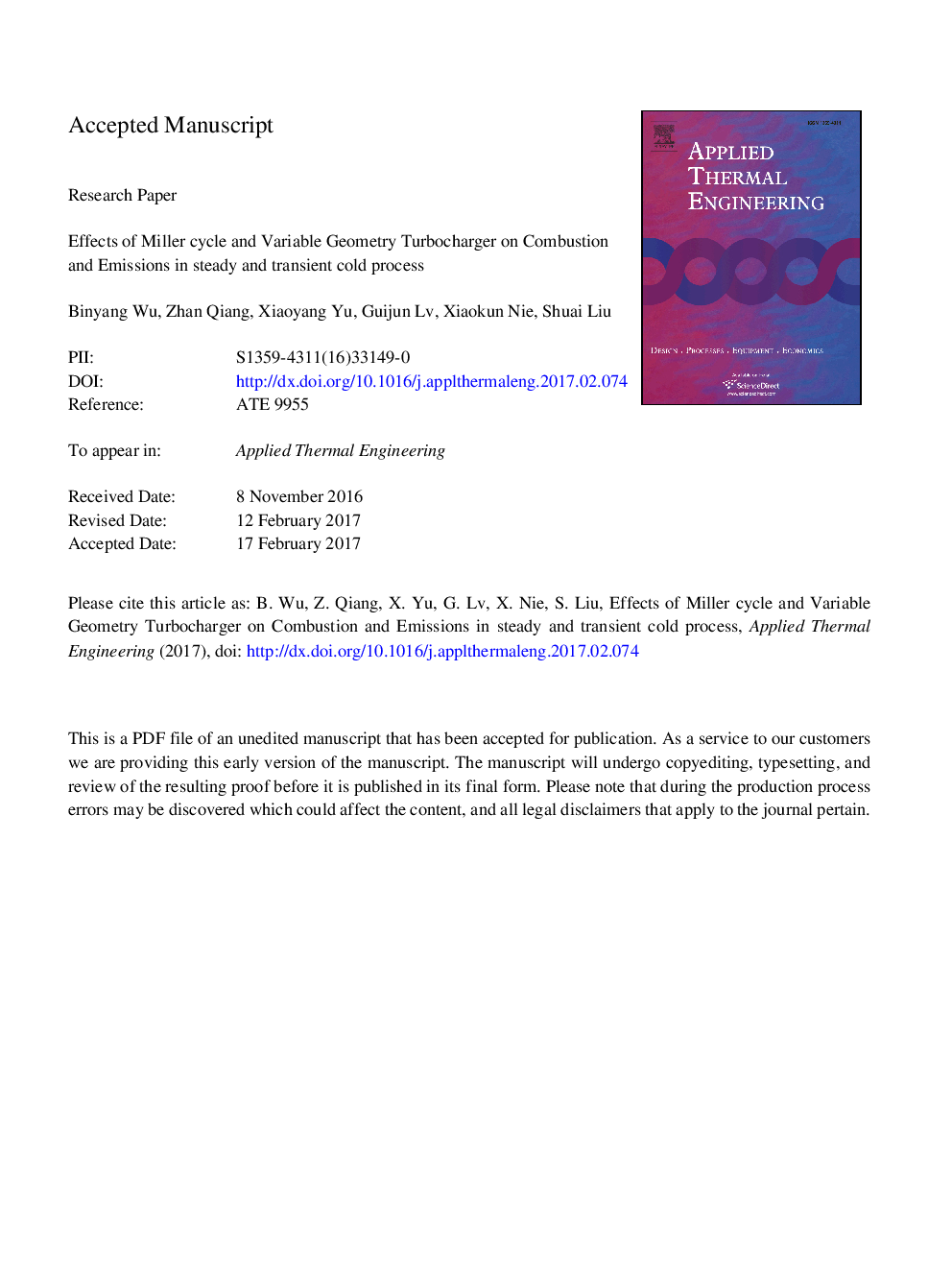| کد مقاله | کد نشریه | سال انتشار | مقاله انگلیسی | نسخه تمام متن |
|---|---|---|---|---|
| 4991392 | 1457111 | 2017 | 28 صفحه PDF | دانلود رایگان |
عنوان انگلیسی مقاله ISI
Effects of Miller cycle and variable geometry turbocharger on combustion and emissions in steady and transient cold process
ترجمه فارسی عنوان
اثر توربو شارژر چرخه میلر و هندسه متغیر در احتراق و انتشار در روند ثابت و مداوم سرد
دانلود مقاله + سفارش ترجمه
دانلود مقاله ISI انگلیسی
رایگان برای ایرانیان
کلمات کلیدی
Variable geometry turbochargerVGTEGRLIVCHCCIIVCTIMEPBMEPNOx - NOXEmission - انتشارNitrogen oxides - اکسید نیتروژنbrake mean effective pressure - ترمز فشار متوسط موثرVariable geometry turbine - توربین هندسی متغیرBrake thermal efficiency - راندمان حرارتی ترمزRoHR - روهرHomogeneous Charge Compression Ignition - سوپاپ فشرده سازی همگنTransient condition - شرایط گذراcarbon monoxide - منوکسیدکربنRate of heat release - نرخ انتشار گرماEquivalence ratio - نسبت متعادلIndicated mean effective pressure - نشان دهنده فشار متوسط موثر استBTE - وسایل کمکDynamic response - پاسخ دینامیکیMiller cycle - چرخه میلرexhaust gas recirculation - گردش بازگشتی گاز اگزوز
موضوعات مرتبط
مهندسی و علوم پایه
مهندسی شیمی
جریان سیال و فرایندهای انتقال
چکیده انگلیسی
The influence of Miller cycle and variable geometry turbocharger (VGT) on combustion and emissions was investigated in steady and transient operation of a heavy-duty diesel engine. The experiment was conducted on a six-cylinder diesel engine with common rail fuel injection, two-stage turbocharger and Miller cycle. The results revealed that Miller cycle decreased soot and nitrogen oxides (NOx) emissions and increased brake thermal efficiency (BTE) in certain operation. In the steady operation, the intake flow was reduced in a cold condition because the low oil temperature led to the hydraulic mechanism delay intake valve closing timing. However, by adjusting VGT, low emissions of soot and NOx could still be obtained with relatively high BTE. In cold transient process, dynamic response of torque depended on indicated work and gas pumping work. A good trade-off performance could be achieved by maintaining the initial VGT rack position for 0.5Â s. Compared to VGT variation under the steady-state map, soot peak emissions were reduced by 50% with NOx emissions nearly unchanged by VGT control strategy 3 and Miller cycle. Compared to diesel conventional cycle, the combination of Miller cycle and VGT control strategy 3 can not only ensure quick dynamic torque response, but also reduce NOx peak emissions by 10% with slightly increased soot peak emissions.
ناشر
Database: Elsevier - ScienceDirect (ساینس دایرکت)
Journal: Applied Thermal Engineering - Volume 118, 25 May 2017, Pages 621-629
Journal: Applied Thermal Engineering - Volume 118, 25 May 2017, Pages 621-629
نویسندگان
Binyang Wu, Qiang Zhan, Xiaoyang Yu, Guijun Lv, Xiaokun Nie, Shuai Liu,
